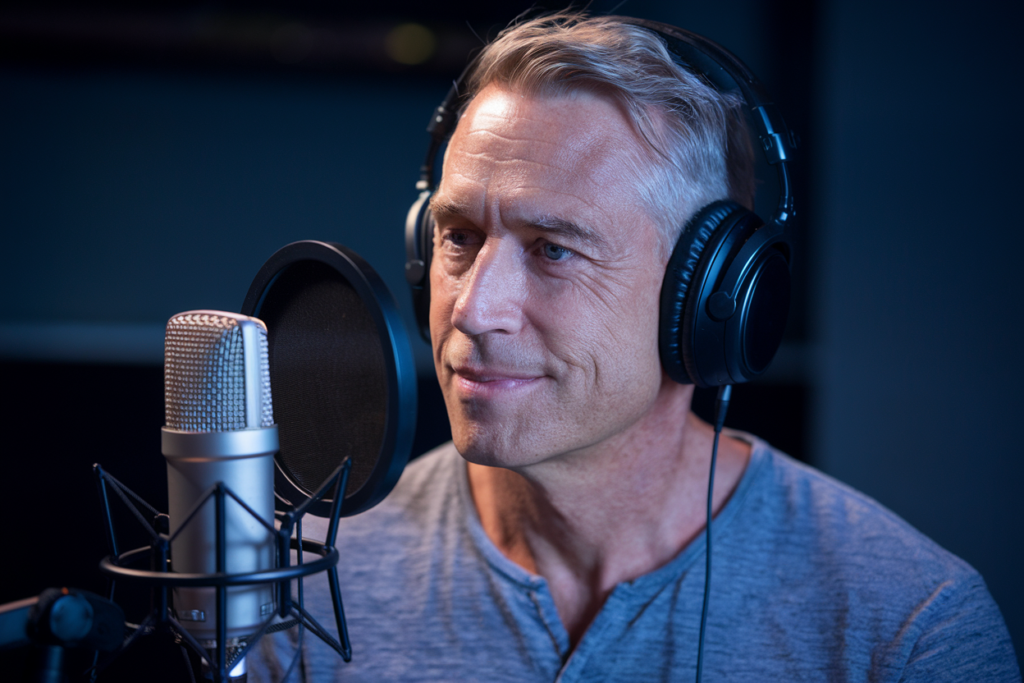Dubbing has transformed the way we experience films and television shows, allowing audiences to enjoy content in their native languages. But have you ever considered the intricacies of American English lip sync in this process? It’s not just about translating dialogue; it’s about matching words to the actors’ mouth movements while maintaining emotional resonance.
American English dubbing presents unique challenges for voice actors and directors alike. They must navigate cultural nuances, regional accents, and pacing to create a seamless viewing experience. Understanding these elements can deepen your appreciation for the art of dubbing and its impact on storytelling across different cultures. Dive into the fascinating world of lip sync in American English dubbing and discover how it shapes our connection to global media.
Key Takeaways
- Understanding Lip Sync: American English lip sync is crucial for aligning dialogue with on-screen mouth movements, enhancing the authenticity of dubbing.
- Cultural Nuances: Accurate lip sync incorporates cultural references and emotional undertones, making narratives relatable to diverse audiences.
- Audience Engagement: Effective synchronization fosters emotional connections between characters and viewers, enhancing overall enjoyment and immersion in the story.
- Technical Skills Required: Voice actors must master techniques like phonetic timing and visual reference to achieve precise alignment in their performances.
- Challenges Faced: Timing discrepancies and regional accents present challenges that voice artists must navigate for a seamless viewing experience.
- Future Trends: Innovations such as AI-driven tools, improved lip sync technology, and remote recording capabilities are shaping the future of dubbing.
Overview of Lip Sync in Dubbing
Lip sync in dubbing plays a crucial role in delivering an authentic viewing experience. It involves aligning the spoken dialogue with the lip movements of on-screen characters, enhancing the believability of performances. This synchronization requires skilled voice actors who can adjust their timing and delivery to match the original audio perfectly.
Voice over talent must understand not only the script but also how to convey emotions that reflect the original performance. They rely on precise pacing and inflection to ensure that their voiceovers resonate with viewers while maintaining cultural context. Attention to detail is essential; even slight deviations from lip movements may disrupt immersion.
Directors oversee this intricate process, guiding voice artists through various takes until they achieve flawless alignment. The collaborative nature of dubbing ensures that every element—dialogue, emotion, and visual cues—harmonizes seamlessly. This artistry elevates storytelling by allowing audiences to engage fully with characters’ journeys, regardless of language barriers.
Effective lip sync in dubbing combines technical skill with artistic interpretation. It transforms content into a relatable experience for diverse audiences while showcasing the talents of voiceover professionals dedicated to their craft.
Importance of American English Lip Sync
American English lip sync plays a crucial role in the dubbing process, directly influencing the overall quality and effectiveness of localized content. It enhances authenticity, ensuring audiences connect with the characters on screen.
Cultural Impact
Cultural nuances shape how stories are received across different regions. Accurate lip sync allows voice actors to convey emotions and cultural references that resonate with local viewers. By aligning dialogue with visual cues, voiceover professionals bridge cultural gaps, making narratives relatable and engaging for diverse audiences. This skillful synchronization not only retains the original intent but also enriches storytelling by respecting cultural contexts.
Audience Engagement
Audience engagement hinges on the seamless integration of dubbed voices with character actions. Effective lip sync captivates viewers by creating an immersive experience where dialogue feels natural and reflects genuine interactions. When voice talents deliver performances that align closely with lip movements, it fosters emotional connections between characters and audiences. This attention to detail keeps viewers invested in the story, enhancing their overall enjoyment and satisfaction.
By prioritizing precise American English lip sync in dubbing projects, you ensure high-quality productions that resonate deeply with viewers while showcasing the expertise of skilled voice artists.
Techniques in American English Lip Sync
Lip sync techniques play a crucial role in the success of dubbing projects. Various methods and strategies ensure that voice performances resonate with audiences while aligning perfectly with on-screen visuals.
Synchronization Methods
Synchronization involves matching dialogue to lip movements seamlessly. Key methods include:
- Phonetic Timing: This method focuses on analyzing the phonetic structure of words, ensuring that each spoken word corresponds accurately to mouth movements.
- Visual Reference: Voice actors often watch original performances closely to capture nuances in expression and timing, allowing for more authentic delivery.
- Recording Techniques: Utilizing high-quality recording equipment enhances clarity. Proper microphone placement helps maintain vocal consistency during sessions.
These synchronization methods contribute significantly to creating a believable viewing experience, allowing you to draw viewers into the story effectively.
Voice Matching Strategies
Voice matching emphasizes aligning voice talent with character personalities. Essential strategies involve:
- Vocal Quality Assessment: Evaluating the tonal qualities of original characters helps select voice artists who can replicate similar sounds and emotional ranges.
- Character Study: Understanding character backgrounds allows voice actors to infuse appropriate emotions into their performance, resulting in a connection that feels genuine.
- Accent Adaptation: Incorporating regional accents or speech patterns ensures authenticity, which helps local audiences relate better to the content.
Employing these voice matching strategies enhances overall quality, making your project stand out while achieving cultural resonance within target markets.
Challenges in American English Lip Sync
American English lip sync presents unique challenges that impact the quality of dubbing projects. Key factors include timing, rhythm, and cultural nuances that voice actors must navigate to create an authentic viewing experience.
Timing and Rhythm
Timing and rhythm play crucial roles in successful lip sync. Voice actors must align their delivery with the on-screen character’s mouth movements, ensuring dialogue matches precisely with visual cues. This requires careful attention to pacing, as differences in language structure can lead to mismatches. For instance, certain phrases in American English may take longer or shorter to pronounce than their original counterparts, complicating synchronization efforts. Skilled voice artists utilize techniques like phonetic timing and high-quality recording methods to maintain fluidity while achieving accurate alignment.
Cultural Nuances
Cultural nuances significantly influence how viewers perceive dubbed content. Voiceover professionals need to capture subtle emotional undertones that resonate with local audiences. Regional accents and colloquialisms enhance relatability but require extensive understanding from voice talent when interpreting characters’ dialogues. Accurate portrayal of cultural references ensures that humor or sentiment translates effectively across languages, enriching the overall storytelling experience. Additionally, adapting performances based on regional context fosters a deeper connection between characters and viewers, making it essential for voice artists engaged in this intricate process to remain culturally aware while delivering compelling performances.
Future Trends in Dubbing
Dubbing continues to evolve, with advancements in technology and changing audience preferences shaping future trends. Innovative techniques enhance the quality of voiceovers, making them more engaging and immersive.
- AI-Driven Voiceover Tools: AI technology improves efficiency in dubbing by assisting voice artists with script analysis and character emotion mapping. These tools streamline the process, allowing for quicker turnaround times while maintaining high-quality standards.
- Enhanced Lip Sync Technology: Improved software for lip sync helps voice actors synchronize their dialogue more accurately with on-screen movements. This technological advancement ensures that performances feel authentic, enhancing viewer immersion.
- Diversity in Voice Talent: A growing emphasis on cultural representation leads to an increased demand for diverse voice talents from various backgrounds. This shift allows productions to resonate better with global audiences by capturing authentic accents and emotions.
- Remote Recording Capabilities: The rise of remote recording setups gives voice artists flexibility, enabling collaborations across distances without sacrificing sound quality. This trend makes it easier to connect skilled talent with projects regardless of location.
- Focus on Emotional Authenticity: Producers are prioritizing emotional depth in performances, recognizing its critical role in connecting with audiences. Skilled voice actors who can convey genuine feelings will continue to be essential as storytelling demands evolve.
- Cross-Media Integration: As content spans multiple platforms—such as video games, streaming services, and virtual reality—voiceovers become integral across formats. Adaptability among voice talents is vital for meeting the needs of various media landscapes.
- Audience Interaction: Interactive content creates new opportunities for personalized dubbing experiences where viewers can select voices or styles that suit their preferences, enhancing engagement through tailored performances.
These trends signal a promising future for dubbing where innovation meets artistry, ensuring that your projects leverage the best available talent and techniques for captivating storytelling.
Conclusion
American English lip sync in dubbing plays a crucial role in delivering an authentic and engaging viewing experience. By skillfully aligning dialogue with on-screen action voice actors can create emotional connections that resonate with local audiences. This intricate process not only enhances storytelling but also showcases the artistry and dedication of those involved.
As technology continues to advance you’re likely to see even more innovative techniques that improve synchronization and overall quality. The future of dubbing looks promising with a focus on emotional authenticity and cultural relevance. Embracing these developments will ensure that localized content remains relatable captivating diverse viewers around the world.
Frequently Asked Questions
What is American English dubbing, and why is it important?
American English dubbing involves replacing original dialogue in films and television with a translated version in American English. It enhances the viewing experience by allowing audiences to enjoy content in their native language while ensuring emotional depth and cultural relevance.
How does lip sync affect the quality of dubbing?
Lip sync ensures that the spoken dialogue aligns perfectly with on-screen character movements. Effective synchronization enhances believability, making performances more immersive and relatable for viewers, which ultimately enriches storytelling.
What challenges do voice actors face in dubbing projects?
Voice actors encounter challenges like timing, rhythm, and cultural nuances. They must match their delivery to on-screen actions while capturing emotional undertones and regional accents to resonate with local audiences effectively.
What techniques are used for effective lip sync in dubbing?
Techniques such as phonetic timing, visual reference, and high-quality recording ensure accurate synchronization of voice performances with visuals. Voice matching strategies enhance authenticity through vocal quality assessment and accent adaptation.
How is technology shaping the future of dubbing?
Advancements like AI-driven voiceover tools improve efficiency by assisting artists with script analysis. Enhanced lip sync technology ensures better dialogue synchronization, while remote recording capabilities allow for diverse talent collaboration across platforms.
Why is cultural awareness important in dubbing?
Cultural awareness helps voice artists convey humor, sentiment, and emotional undertones accurately. Understanding cultural references fosters deeper connections between characters and viewers, enhancing relatability within dubbed content.
What trends are emerging in the dubbing industry?
Emerging trends include increased demand for diverse voice talent, advancements in technology for better performance accuracy, emphasis on emotional authenticity, cross-media integration of voiceovers, and personalized audience interactions within dubbing experiences.






